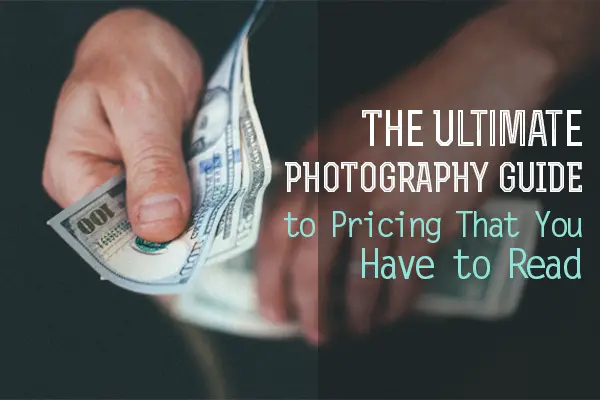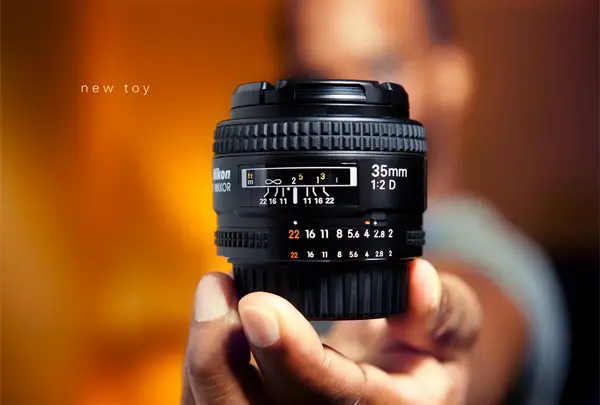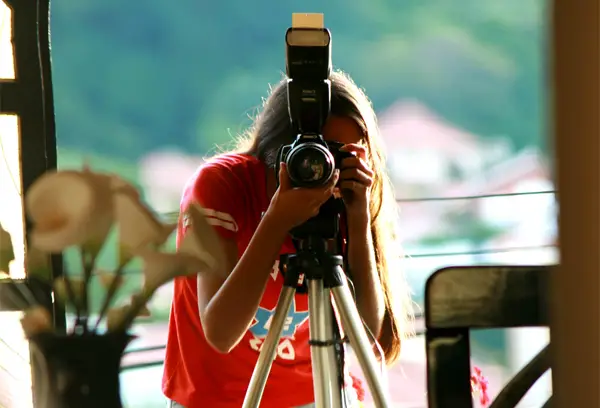Setting the proper price for your photography business is one of the most important, thus challenging, things you may face in your photography career. Photography pricing determines your priorities, profit potential, competition niche and business style.

Bad pricing lists could not only cost you money, but also destroy your business before you can say Jack Robinson, if you know what I mean! You would work endless hours for ridiculously little pay, and at long last, it would kill the passion of what you do. That’s not a horror story, but the reality you may face if you do not learn to calculate your price list in time.
Even if you’re just a newbie in photography and you feel like you can’t run a profitable business yet, you should push yourself to stop giving away your services for free and start charging the money you’re worth. We don’t want you to end up with an emotional breakdown or a heart attack, so keep reading this quick photography pricing guide to get a price you’ll feel more comfortable with.
The Market
First things first: You should know the average pricing list of photographers from your area. Of course, you should focus on photographers of your type, for example wedding or portrait ones. Research all the wedding photographers from your area to find out what they’re charging.

Use their prices as a starting point, but don’t forget to include prices for your professionalism, experience, services and transaction costs (for example, if you should get to the particular area yourself, don’t forget to include the price of gas in your price). You need to price yourself for profit!
The Client
People are different; you know that. Someone could pay more for services, meaning better picture qualities. But some people can’t afford it. Determine your target audience, and start trying to reach them. Unless you find your proper audience, it could be difficult to keep to a higher price bracket.
You should get your emotions out of this and try to think as a business owner. No businessman would run a losing business (or else he’d go bankrupt). No right-minded businessman would ever entertain the notion of not making a lot of money or continually boosting profits, year over year.
You have to know your own minimum income needs to cover your non-reimbursable business expenses! Essentially, it simply comes down to taking in a whole lot more than what you spend in running your photography business.
Your Investments
Now it’s time to evaluate your investments in one regular photo session. Determine how much time you need for a regular photo shoot and then for the exclusive ones (weddings, for instance). Don’t hesitate to include the time you spend on driving, preparations, interacting, photo-editing, the shooting time itself, quality and service.

When you know at least approximately your price for the hour, you’d have a solid basis from which to make up a price for the whole photo shoot. But remember about the break even line. Analyze how many photo shoots you would have in a month and set your prices so that you profit from them. After all, you deserve to have a little more than you expected because you’re a talented photographer in the first place!
Your Expenses
Each photographer has expenses above and beyond the photo session. It’s those pesky transaction costs I was talking about above, and these include the whole amount of time you spent, insurance, costs of equipment (which is really expensive these days), presentation and other expenses you think are worth including.
Time is money.
Benjamin Franklin
Your job should cover all these expenses overhead and give you clear profits! Don’t shortchange yourself.
One Price
This method is the best for photographers who don’t like selling itself and want to keep things as clear and simple as possible. For instance, charge $4000 for a wedding, no matter how long it will take, how far it is from your home, and without taking into account other expenses. So, for 10 weddings, you would expect to make $40,000 in revenues. But if you subtract transaction fees, expenses on equipment, insurance, portfolio costs, etc. you’d see that you have just 30-40% of this amount.

Also, using this method of one photography price, don’t forget to think of some items that you can up-sell, such as wall prints, case covers with your photographs and albums. In that case, you should sell them as “a la carte” items, meaning that each of the items would go for an additional price.
Package Price
Photography packages tend to be more popular among photographers these days, especially when it comes to wedding and portrait ones. There could be a three hour-long photo shoot and 20 pages of photo albums in a pack. If three hours are not enough, or 20 pages are too many, you can change the numbers anytime depending on your clients’ needs.
Using the package method of pricing, a client should pay for your hours only, and additional ones go for additional fees. You can create a few packages, starting with a small wedding pack. Then include the middle package that is supposed to be the most usable and popular, the one you would use all the time. And don’t forget about the biggest “whopper package” that would include all the offerings you have to make the other packs look affordable. It’s a psychological trick that really works!

Of course, a lot of photographers have no idea where to start their pricing list, and package price methods seem to be the best option, especially when you have a lot of additional products and services to sell. It’s all up to you.
If you have not found the answer to your question in my guide, there’s also a lot of bite-sized help out there for specific queries you may have about pricing. Here are the top five I found around the web:
- How to Charge for Your Work: Making the Leap from “Favor” to “Job”
- Photography Pricing: How much is your Art worth?
- How to Price Your Photography
- 6 Tips for Setting your Photography Prices
- Photographer’s Pricing Guide Series: Overview of How to Price Photography
Join the Conversation
Remember that the point of owning your own business is to make a lot of money! There’s no shame in that because you’ll have more with which to stimulate the economy and give to charity! The photography industry is too expensive and too time-intensive for you to survive for some amount of time without ensuring that you have a steady, reliable stream of income.
What do you think? Do you know your market or your clients well enough to set the price at once? Do you prefer one price or the package price method? Does your income cover your expenses? Share your own tips and experiences in the comment field below. Don’t be afraid to join the conversation!









0 comments